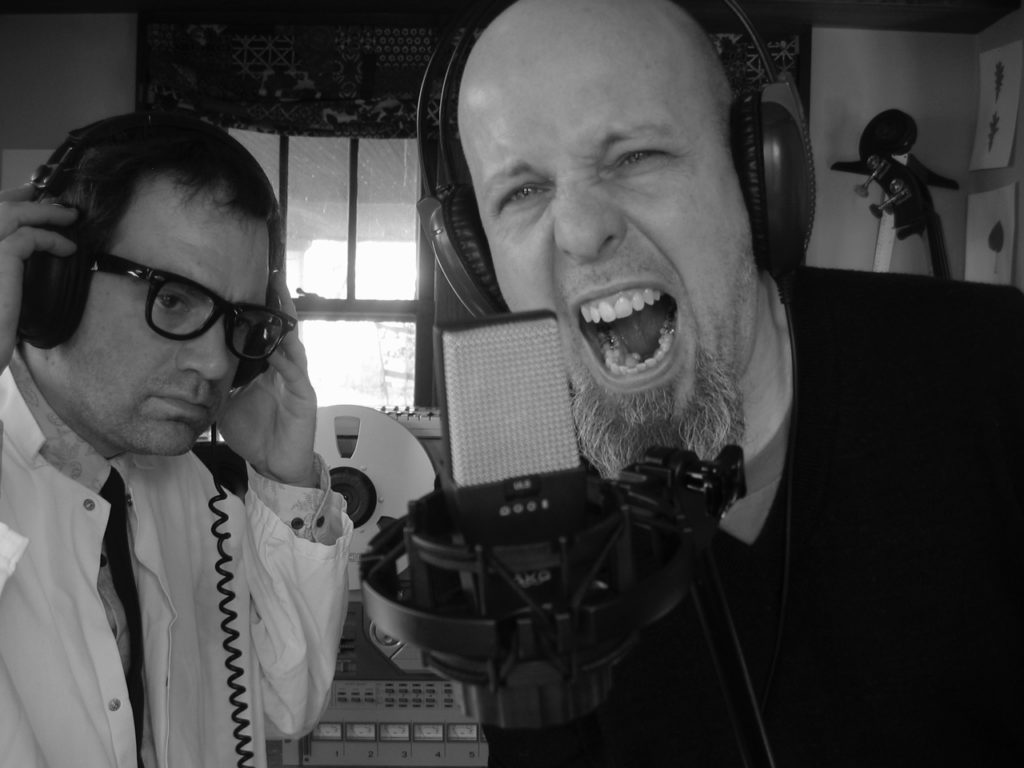
Paul at Abbey Road Studios with John Leckie.
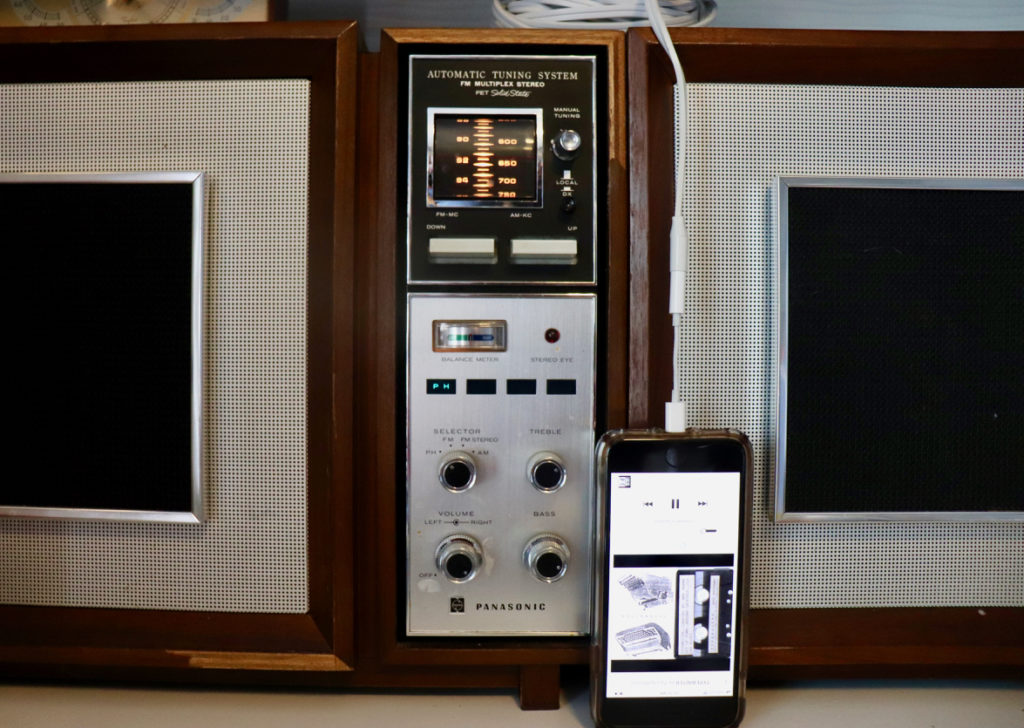
From cassette to cassette to WAV to Bandcamp to iPhone to thunderbolt to eighth-inch stereo to RCA to Panasonic to kitchen.
If I accomplish nothing else as a rock scholar, I will have done good if I write about Paul.
Paul Kotheimer’s works are now all on Bandcamp, a platform I endorse. Given that I don’t know how any of us is going to make any money.
I know many of these records by heart. Many have lit a path. The totality documents the past quarter century.
Typewriter
It was a cassette-only release about the awesome power of the typewriter, with even more literary references than we caught in 1993. It’s a more than goddamn respectable debut for Kotheimer, who had already honed through innumerable chaotic Chicago coffeeshop gigs his taut electrics-are-for-sissies guitar playing and the voice of an angel with vertigo. Although songs about cars would become less of a focus over the ensuing decades, the promise was kept – the promise of this young musician and the implicit promises as to the perfection of future releases.

Tape is not an archival medium, but I like it.
Dog Heaven
There’s something about tape. Well that thing, how it sounds, but also the thing of having two sides. Like an LP, but more confusing. Especially in a car dashboard tape deck with auto reverse. Meaning that this wonderful album might be thought of as two EPs. LPs even; seems like a long tape. See if you can find out where the seam is between Act I and Act II. At this point Paul’s songwriting embraces locality and never relinquishes it. Paul may or may not have jumped the train or hitchhiked or had a pet dog, and any exaggerations in this department are no worse than what Bob Dylan did in the name of folksinger identity, but Paul Kotheimer is a proud citizen of Urbania. The nostalgia is overwhelming. This is a great tape, and the more you listen to it the deeper you get into its most mysterious crevices, Paul’s strength as a storyteller.
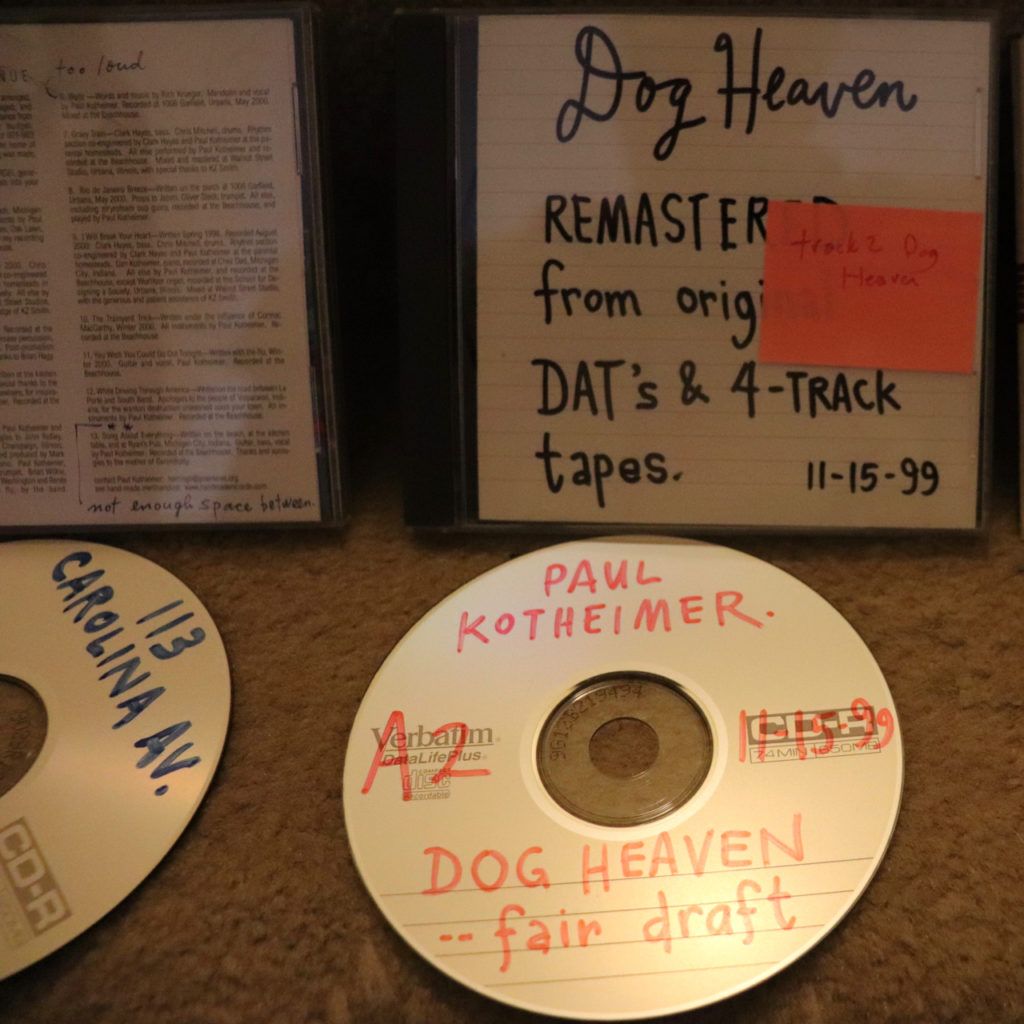
I might not ever have gotten the actual releases of CDs from this period, because I have these test pressings.
Many of these songs are legend, but on this tape the songs that are harder to remember are as good as those that became coffeehouse staples. Must’ve been around this time that I first saw Paul perform, bouncing off the walls – literally – of the small stage at the red Herring coffee House. I inserted myself into his cigarette zone outside under the Monty hum of a streetlight, gave a blushing complement and went on. I bought hooch at the same Osco from whose vestibule he copped the picture of Hard Tines off some color pamphlet. Exacto yo.
Paul Kotheimer is a stone cold fucking troubadour.
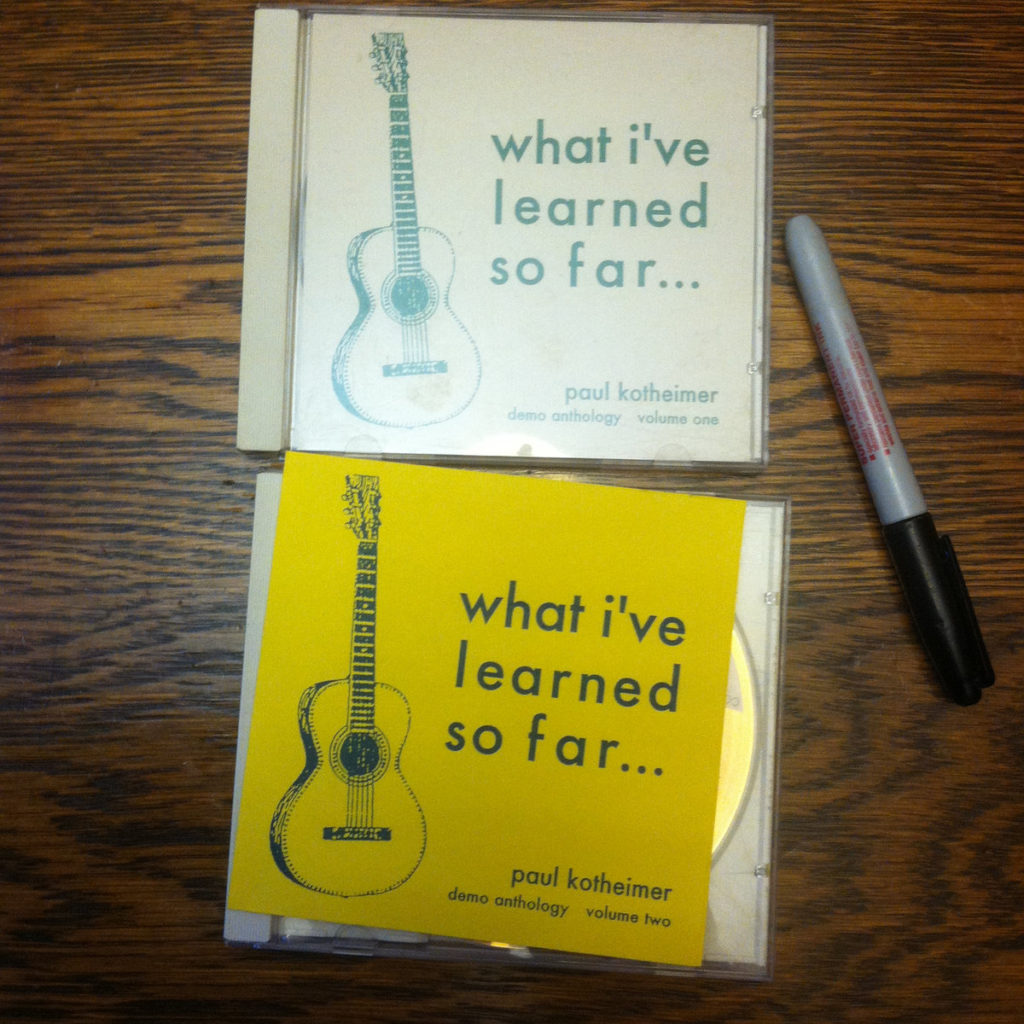
What he had thus far learned, but, importantly, did.
What I’ve Learned so Far
You have no idea how lucky you are to have access to this music. It was officially put out around this time that home CD burners became a thing. These gems from the Kotheimer catalog are the sort of thing where you would have a tape of a tape of a tape, or a soon to be defective CDRW. I think I may have given my copies back to Paul, they were so rare. They are probably in this picture. That might be my Sharpie. This includes some of the “Two-Flat” sessions songs that are all Chicago.
Just listen to the last song and see if you’re tempted to start over from the beginning.
(It might’ve been around this time that Paul had a second identity and an EP on another label as a college rock superstar power quartet name of Herring Boys. College rock superstar? Yes. Recognized by college rock radio? Eh. I mean, Timbuk Three? I don’t know what this lost EP means for Bandcamp consumers, but to me it means that PK was straddling two distinct musical leashes pretty well. Any chamelonic nature would be supplanted by a rare authenticity over time. Some of the auto correct errors I am leaving Jan.
Sputnik Lullabye
At this point the technology stabilizes, a songwriter could afford to have professional CDs printed, and we enter the short-lived Jewelbox Period of Paul’s output. The CD medium would prevail with no truly pleasant substitute until Paul joined Bandcamp last year. What I’m saying is that Paul thinks in albums. He’s had only one vinyl release, he’s not a music collector, many of his songs would serve as stand-alone singles, but he thinks in LPs and EPs irrespective of whatever medium history has offered him.
Paul’s Jewelbox Period is short-lived, and the 2-3 CDs are worth tracking down.
Sputnik Lullabye has too many great songs, as well as being a chocolate box of every kind of Paul song, including songs that seem to contradict each other in their attitudes about love or money or life. Still prevalent are the darkest Paulsong in which a hapless character has hit bottom and is peering, or peeing, into the void of terrifying meaningless that may underlie everything.
About Sputnik Lullabye, Paul, with customary humility, says “A 3-sided melange including some ill advised bonus tracks. A 3-sided melange including some ill advised bonus tracks. The home studio grew to 8 and even 16 tracks during this period. In fact, the home studio graduated and moved out of the house, to Goose Alley, during this time period. The cover image is the result of my first-ever Google image searches. Billed as a ‘Y2K White Album’—due to the sprawling track list and the eclectic mix of techniques.”
Okay, now that Paul has introduced the Beatles into the discussion, with the warring John, Paul, George, Ringo, within the complex Paul Kotheimer, I can no longer deflect the question “Which is Paul’s Sgt. Pepper?” Meaning I may also have to reveal which is Paul’s Let it Be.
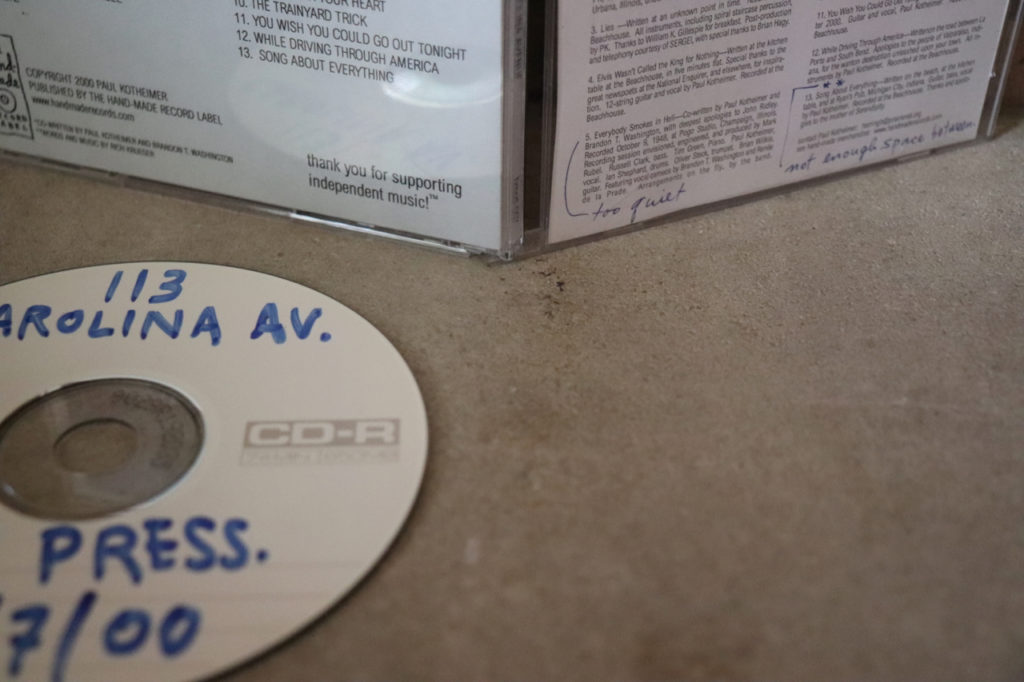
113 Carolina Avenue
“In 2000, when I moved to Michigan City for the summer to work on 113 Carolina Avenue, I had the ADAT machine and the TASCAM 58, and used them in tandem, filling up 8 tracks on one machine and then bouncing them to 2 tracks of the other machine–That was a good method.”
What Paul means to say is that 113 Carolina Avenue is his Sgt. Pepper. He recused himself and his gear to a remote beach location, and he has no known interest in swimming or sunbathing. I arrived there to observe these sessions one afternoon after a difficult New York tour, having driven from O’Hare around the south end of Lake Michigan, and…
He had recused himself and his gear to a remote location to dedicate himself 24/7 to an immersive studio masterpiece, no spiral of darkness, backward instruments, contrived a way to double the number of tracks using two machines. I witnessed the accidental dropping of the drumstick that was left on tape (see photo); maybe I dropped it. After this album, I left Urbana forever, as we must all try to do, Sage would be born, CDs would be revealed as a crap medium, and an endless war on terror was declared by brutal idiots in a nation torn by fear, making it harder to concentrate for all sensitive people. And to think those were the good old days. This record quietly, unbeknownst to itself, grieves the passing of the millennium and so I would have it remembered.
Listen.
Lucky Number 7 / Tascam 58
From PK:
Here’s a few paragraphs about the TASCAM 58, which you call “Lucky Number Seven,” but I don’t anymore for some reason–possibly because 7 is an *unlucky* number when only 7 out of 8 tracks are working, which was the case for so many years with that old beast:
I bought the TASCAM 58 with the big 7 decal in 1997 from a friend who had scored it from the U of I School of Music. I think the decal meant that it was machine number 7, or patchbay input bank number 7, at the electronic music studio. It was new in 1985 or so, and it wasn’t fully functional when I bought it. It took about a year and a lot of calling around to find someone who could get it working. It was not purchased as a fun diversion from digital multi-track or as a vintage piece that I bought for the vibe. It was a roughly contemporary pro-quality project studio tape machine, a significant upgrade from the 4-track reel-to-reel–and even with all the repairs, it ended up being about half the cost of a new ADAT digital 8-track recorder at the time.
The first song I recorded on it was probably “Jeanine for President,” in Spring or Summer 1998. At that same time, I started recording a few songs with Dave King, using the TASCAM 58. Not sure if those ever got released, but I have mixes saved. In Fall of 1998 or so, I moved the machine to Studio 109, where it was part of an ill-fated project studio venture in collaboration with Will Patterson. In winter 1999-2000, I recorded a few songs by The Prince Myshkins at Studio 109 on the TASCAM 58, including “Me and You and Tom” and “Within the Budget,” plus early outtakes of several other songs that got re-recorded to ADAT the following year. Sometime during 1999, I bought my own ADAT machine and started using various methods for linking the analog machine with the ADAT.
In 2000, when I moved to Michigan City for the summer to work on 113 Carolina Avenue, I had the ADAT machine and the TASCAM 58, and used them in tandem, filling up 8 tracks on one machine and then bouncing them to 2 tracks of the other machine–That was a good method. In the process of moving back to Urbana in Fall of 2000, though, I knocked the record heads of the TASCAM out of alignment and couldn’t afford to have them fixed. So the machine sat in storage in various closets and basements from Fall 2000 until 2009, when I recorded one last song on it, “The Great Comet.” Then I had it refurbished and sold it off.
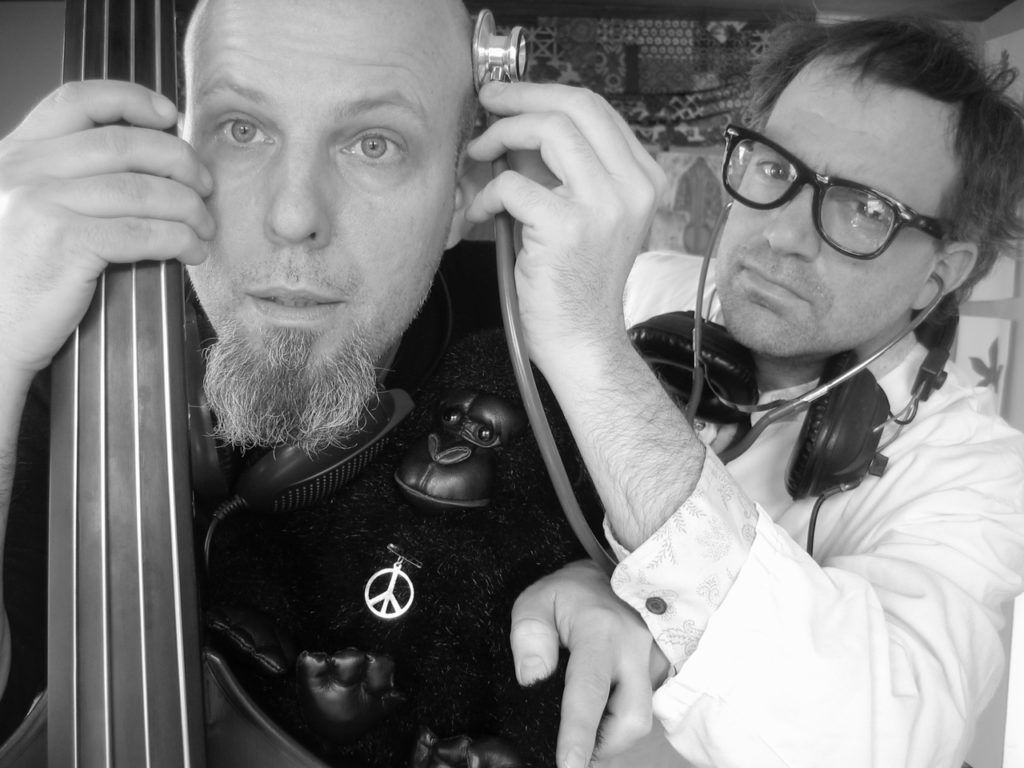
What is going on in there?
